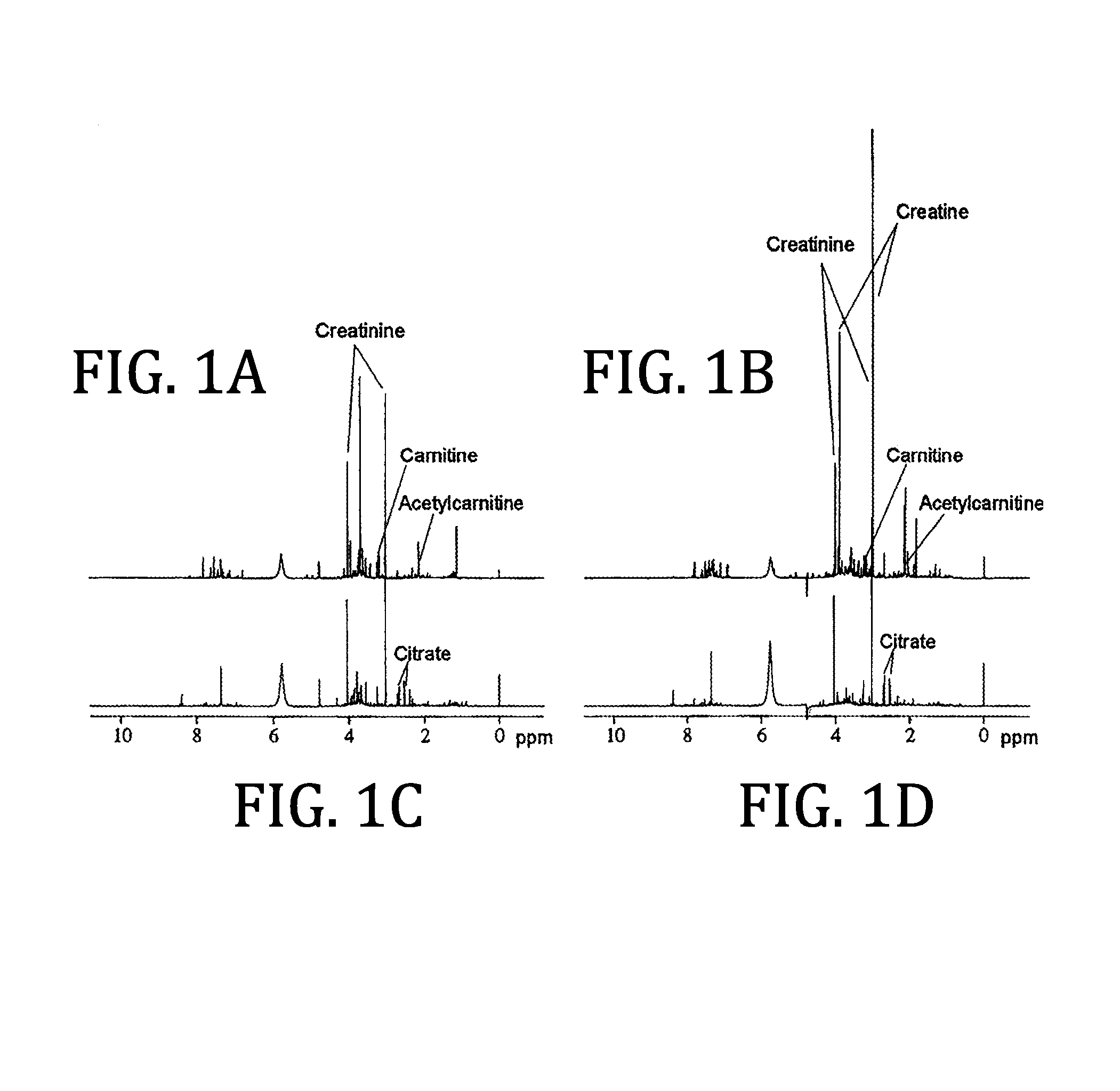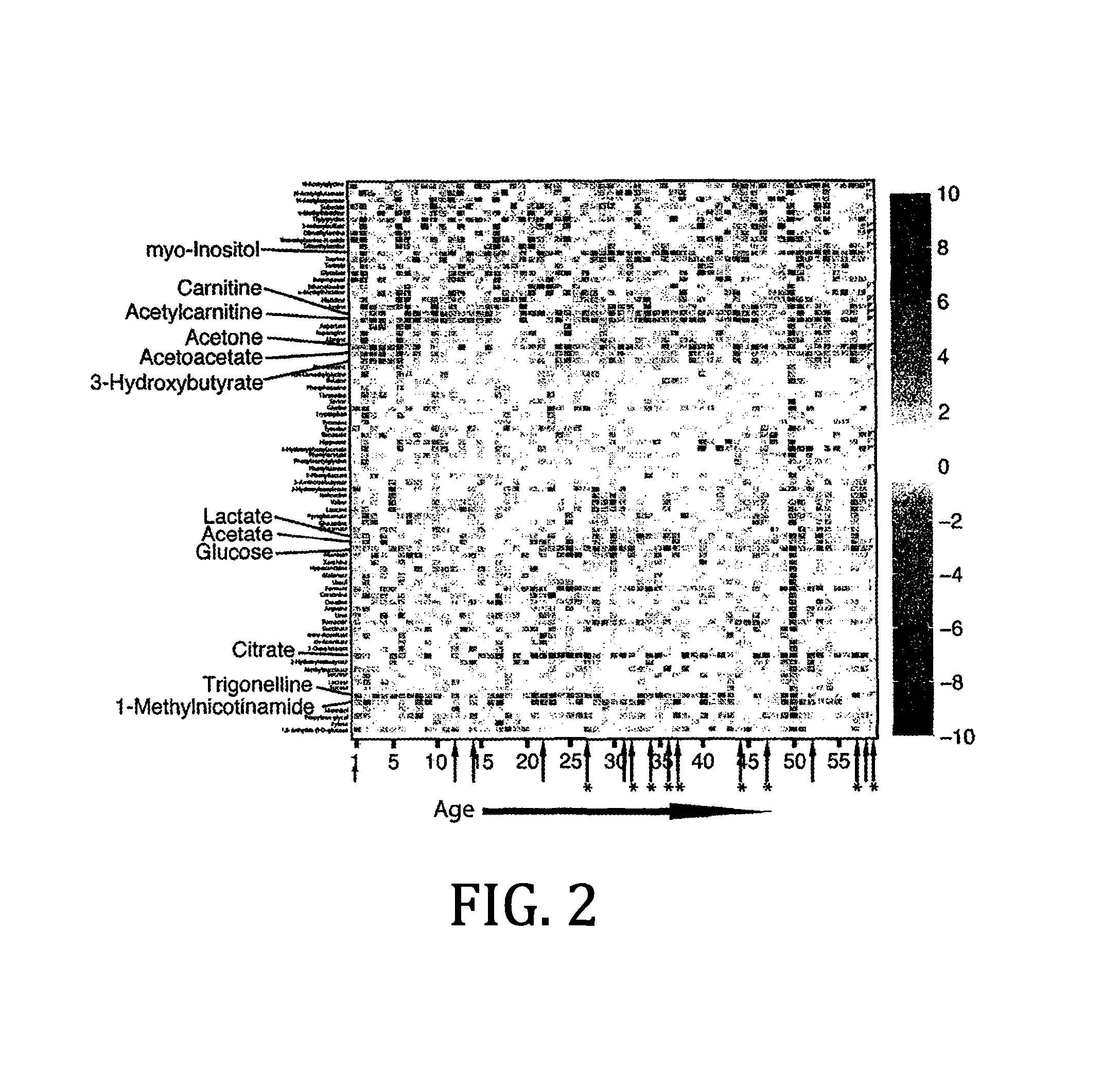Urine based detection of a disease state caused by a pneumococcal infection
a pneumococcal infection and disease state technology, applied in the field of diagnosis of disease states, can solve the problems of difficult diagnosis, often difficult to diagnose disease states, and rarely available within 36 hours
- Summary
- Abstract
- Description
- Claims
- Application Information
AI Technical Summary
Benefits of technology
Problems solved by technology
Method used
Image
Examples
example no.1
EXAMPLE No. 1
I—Methods
Sample Collection and Preparation:
[0049]Normal subjects: A total of 59 volunteer subjects, self identified as normal, constituted the control group. Urine samples were collected twice daily - once as the first void sample in the morning and the second around 1700 h.
[0050]Patients in a disease state caused by S. pneumoniae infections (also sometimes referred to hereinafter as “pneumococcal patients”). A total of 59 patients infected with S. pneumoniae, as determined through cultures of blood, sputum, cerebrospinal fluid, bronchoalveolar lavage samples, endotracheal tube secretions, ascites or a combination of any of these, constituted the pneumococcal infection group.
[0051]Written informed consent was obtained from each patient and normal subject before entering this study, and the study protocol was approved by the institutional ethics committee.
[0052]Sample processing: Upon acquisition of urine samples, sodium azide was added to a final concentration of approx...
example 1.1
[0072]After Example 1.0, a second quantification of urinary components using the same NMR data of Example 1.0 was achieved using the 600 MHz library from Chenomx NMRSuite 4.6 (Chenomx Inc., Edmonton, Canada), which uses the concentration of the added DSS to determine the concentration of metabolites. The Chenomx 600 database was validated against a set of known compound concentrations using the same NMR data collection parameters as used in this study and deemed accurate to better than 15% for all compounds reported. Statistical analysis was then applied in the manner outlined for Example 1.0.
[0073]FIG. 3.2A shows a scores plot from a PLS-DA analysis of pneumococcal group (circles) versus the healthy control grew (black square). A clear separation between the maps is observed. As was observed with the univariate analysis, the multivariate analysis was affected very little by excluding patients with diabetes. Furthermore, inspection of the individual data points within the PLS-DA plo...
example no.2
EXAMPLE No. 2
I Methods
Populations:
[0079]Written informed consent was obtained from each subject and patient before entering this study, and the institutional ethics committees approved the protocols outlined below.
[0080]Patients in a disease state caused by pneumococcal disease (all pneumonia): Pneumonia was categorized as definite pneumococcal pneumonia: positive blood culture for S. pneumoniae (n=37); or possible pneumococcal pneumonia; positive sputum or endotracheal tube culture for S. pneumoniae only (n=15). All patients had a chest X-ray radiograph read as pneumonia by a radiologist. In addition, 2 of the blood positive patients had pneumococcal peritonitis (S. pneumoniae isolated from pleural fluid) and 2 of the blood-positive patients had meningitis (S. pneumoniae isolated from cerebrospinal fluid). S. pneumoniae was identified in microbiology laboratories of the University of Alberta Hospital and Mt Sinai Hospital using standard criteria. For the entire group: n=52 (31 male...
PUM
| Property | Measurement | Unit |
|---|---|---|
| flow rate | aaaaa | aaaaa |
| concentration | aaaaa | aaaaa |
| liquid chromatography | aaaaa | aaaaa |
Abstract
Description
Claims
Application Information
 Login to View More
Login to View More - R&D
- Intellectual Property
- Life Sciences
- Materials
- Tech Scout
- Unparalleled Data Quality
- Higher Quality Content
- 60% Fewer Hallucinations
Browse by: Latest US Patents, China's latest patents, Technical Efficacy Thesaurus, Application Domain, Technology Topic, Popular Technical Reports.
© 2025 PatSnap. All rights reserved.Legal|Privacy policy|Modern Slavery Act Transparency Statement|Sitemap|About US| Contact US: help@patsnap.com



